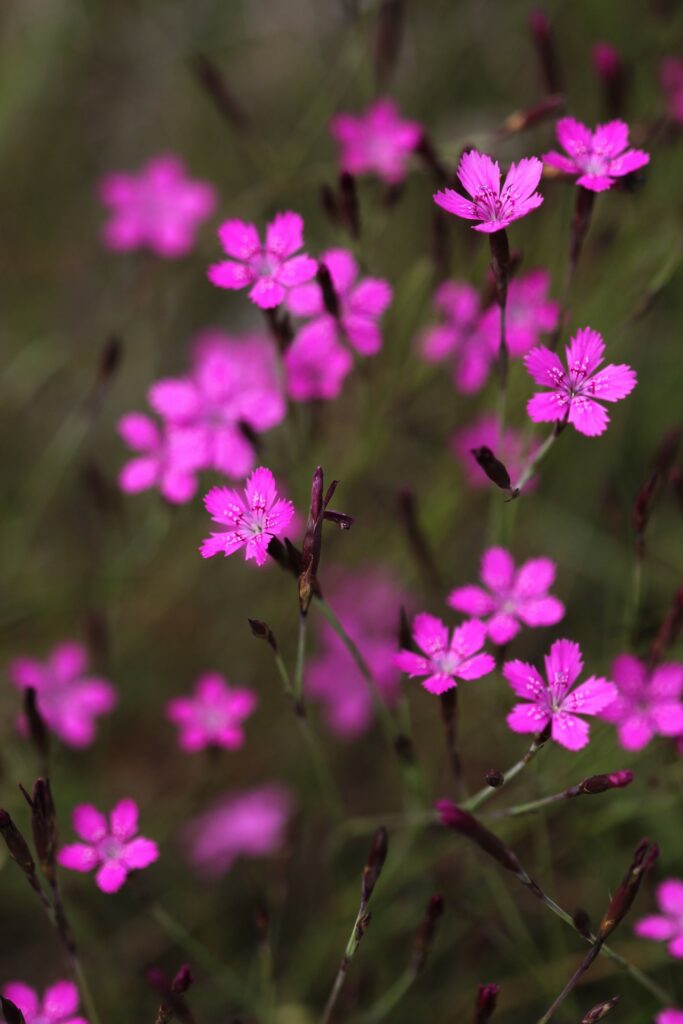
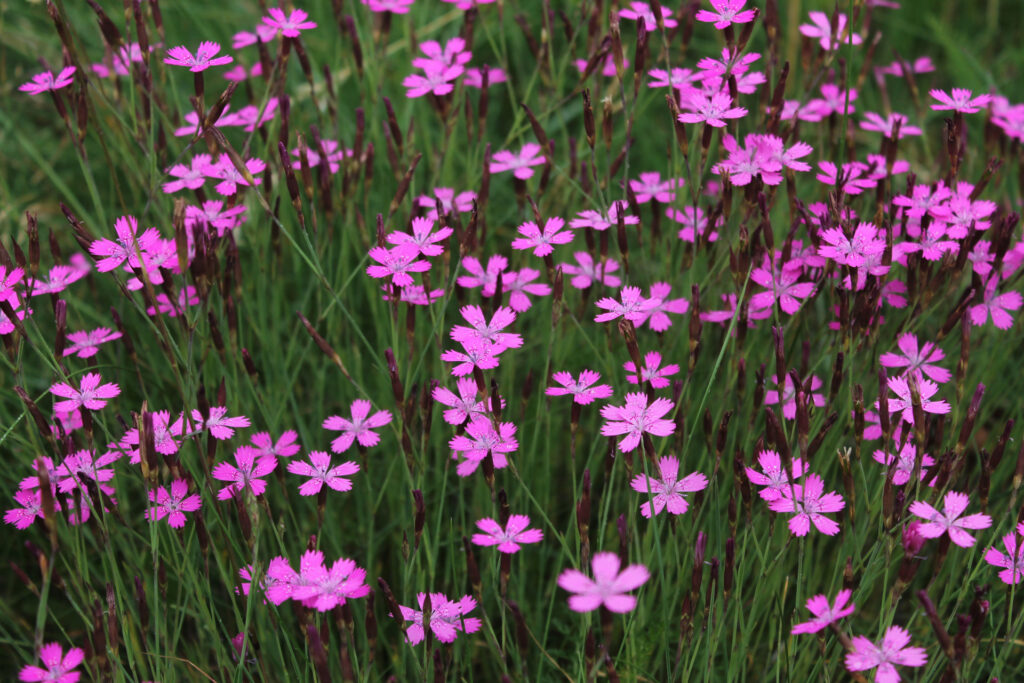
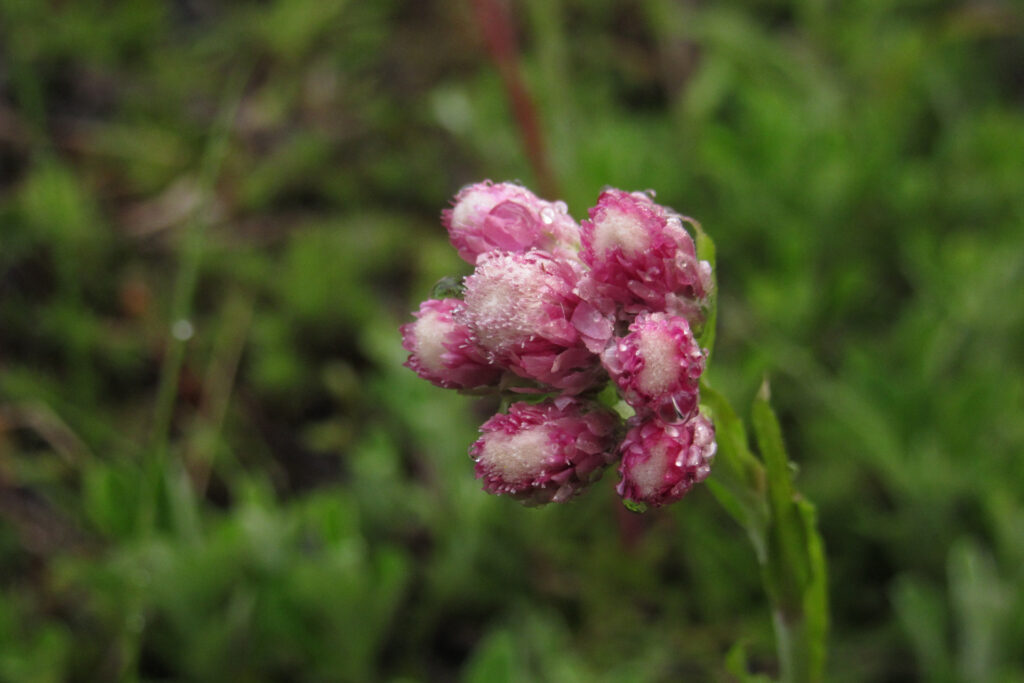
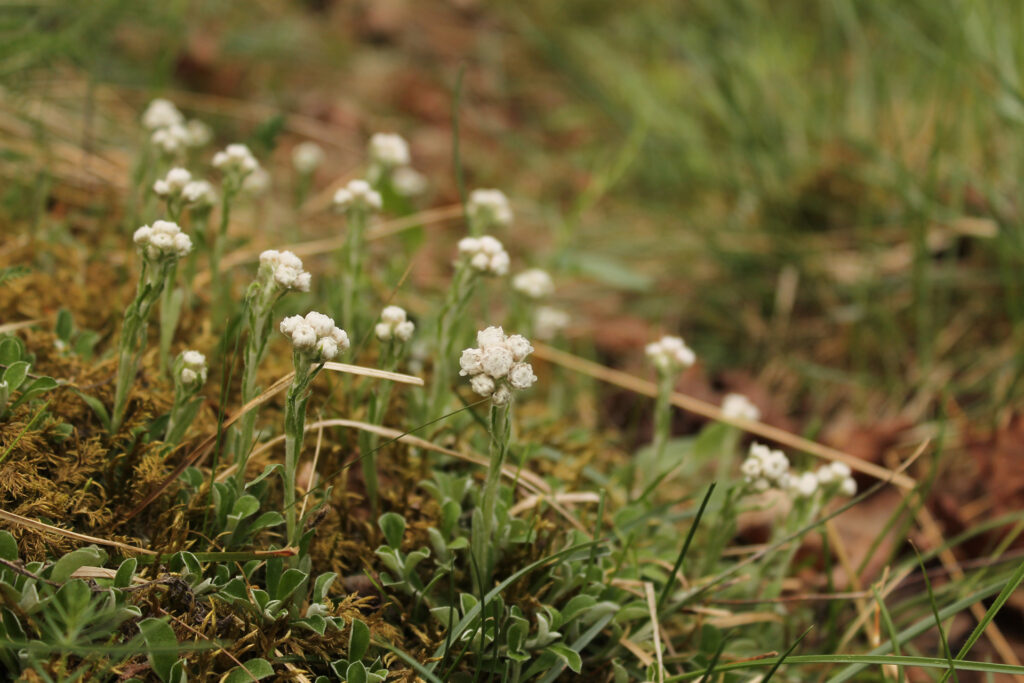
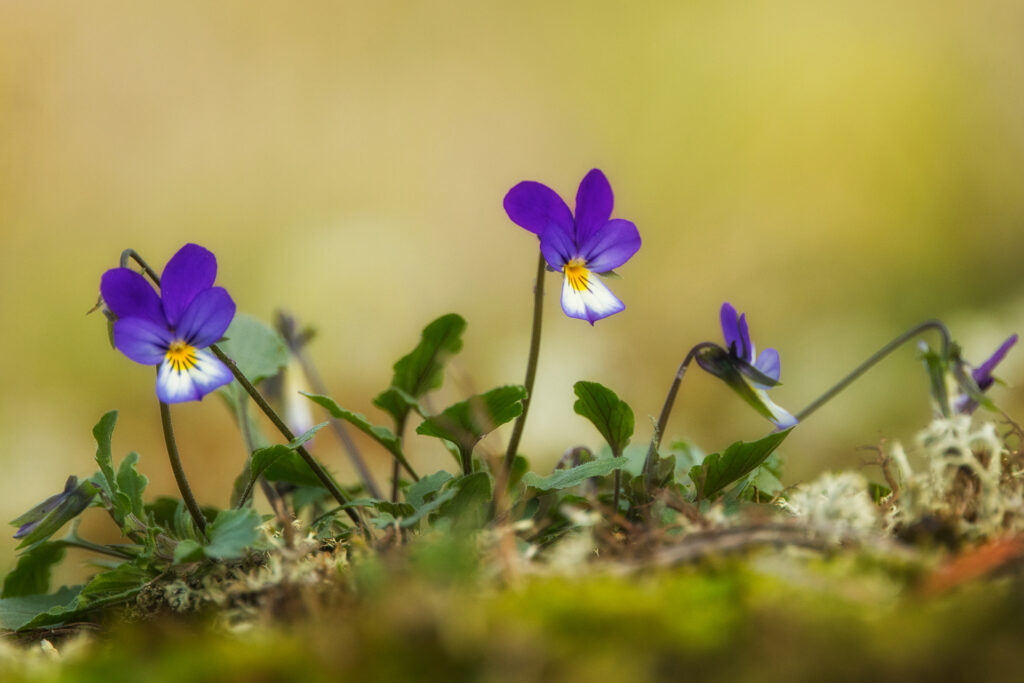
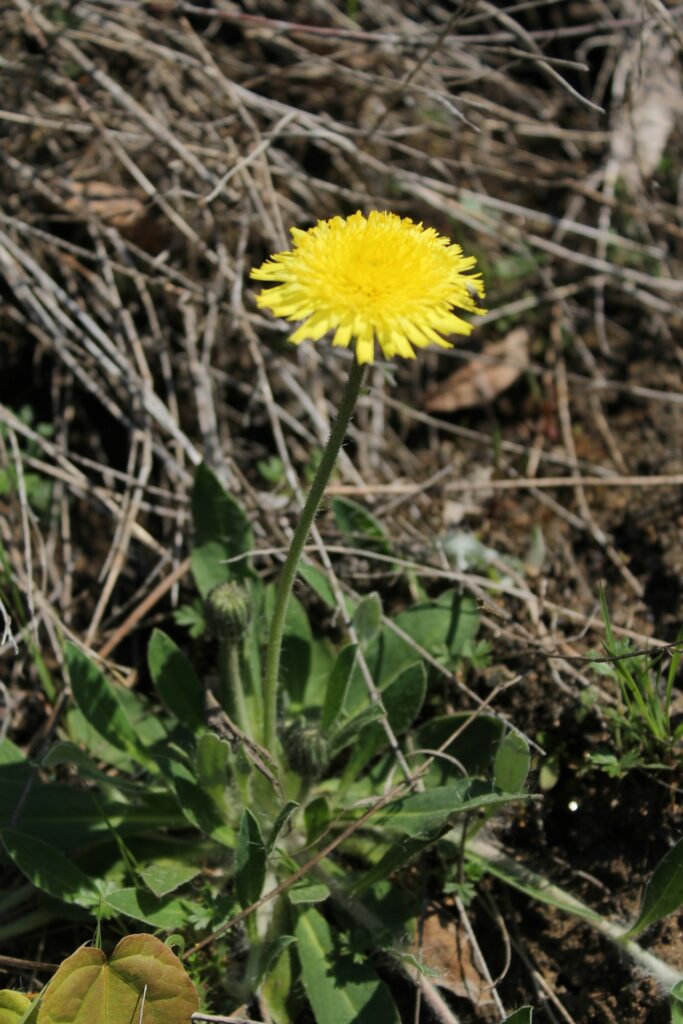
Dry meadows are characterised by low and sparse vegetation, occasional aridity and a scarcity of nutrients. Meadows with very shallow soils are particularly arid, especially if the soil is so shallow that the underlying bedrock is bared in places. These kind of habitats are called rocky dry meadows. Plant species typically found in dry meadows fields include maiden pink, mountain everlasting, wild pansy and mouse-ear hawkweed. They bloom impressively before the dryness of the late summer causes the plants to wilt. The diverse range of plants found in meadows also supports a large number of butterflies, beetles and hymenopterans.
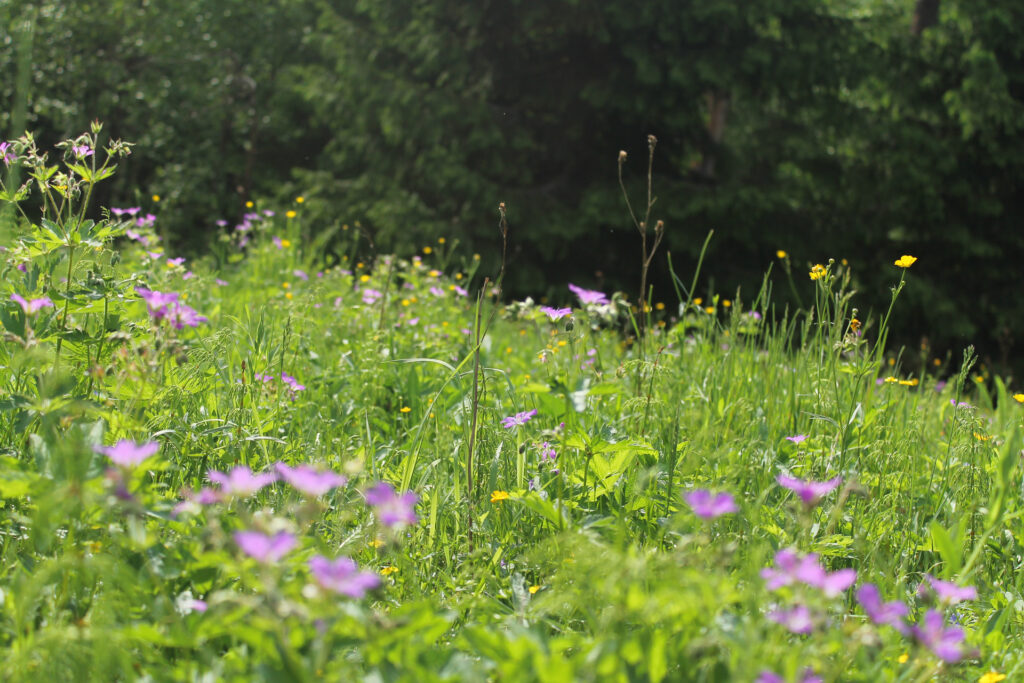
The dry meadows of Ruissalo
Meadows are nutrient-poor, open habitats that have been created as a result of grazing and haymaking. They are called traditional rural biotopes, which have, over centuries of agricultural use, developed rich and distinct flora and fauna that differ significantly from those found in surrounding environments. However, agricultural and societal changes have driven traditional rural biotopes to the brink of extinction and caused many of the species found in them to become endangered. Of all of the threatened species in Finland, one quarter live in traditional rural biotopes, particularly in dry meadows. The remaining meadows in Finland are managed by grazing, clearing and mowing.
Even the last of these open and nutrient-poor habitats are at risk of being claimed by bushes and trees and becoming overgrown due to eutrophic nitrogen deposition and lack of management. If this happens, the threatened species dependent on these habitats will also disappear.
Dry and mesic meadows are maintained by grazing, by removing shading trees and by mowing tall grasses. This keeps the habitat open and gradually decreases the nutrients in the soil. This in turn causes the meadow vegetation adapted to light, nutrient-poor conditions and occasional aridity to return, along with the other species that depend on the plants. Some dry meadow species have also found substitute habitats in roadsides, shore banks and power line clearings.
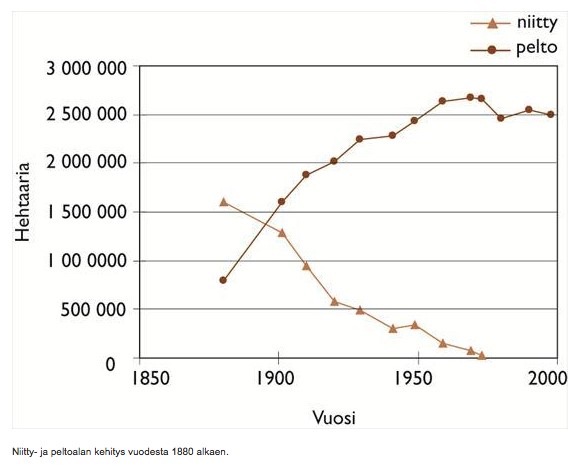
Dry meadows need our help
The mesic and dry meadows created as a result of centuries of traditional pasturage and haymaking are currently disappearing. With pasturage in natural environments having decreased and fodder production having been moved to arable land, the formerly common meadows and woodland pastures have become rare.
The sun always shines on dry meadows
With no shading trees standing in the way, the spring sun shines unobstructed on dry meadows. After the winter, their soil is wet from meltwater. Combined with the sunlight and increasing warmth, this wakes up meadow plants, which soon start reaching upwards and opening their delicate flowers to attract pollinators. However, it takes some time for dry meadows to reach full bloom. This is why those interested in botany should first head to herb-rich forests in the spring and come admire the meadows later, in early summer.


